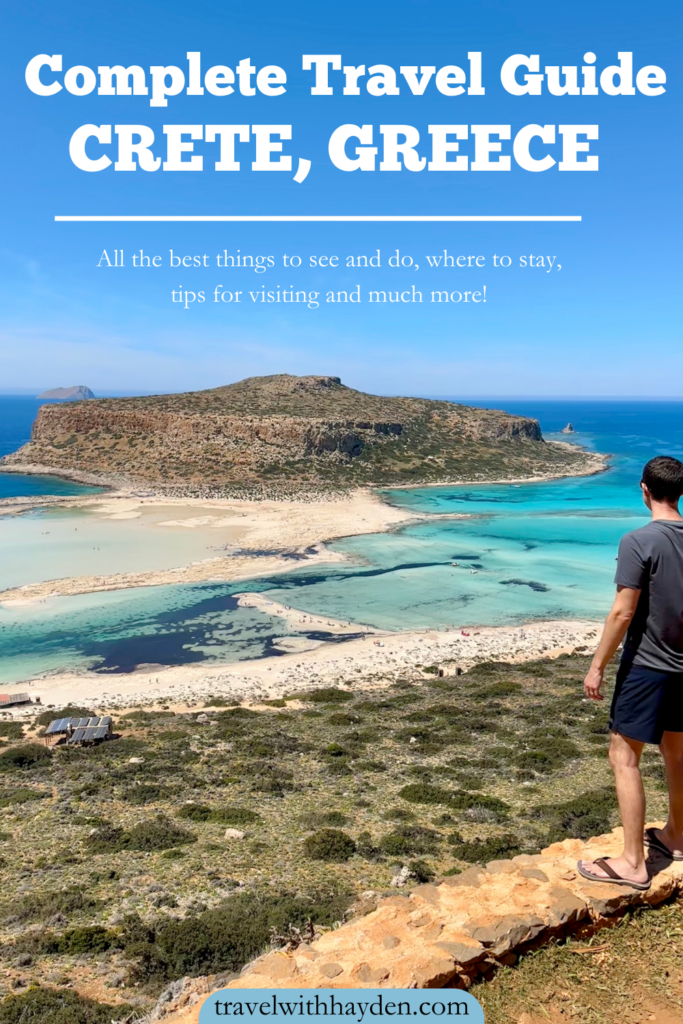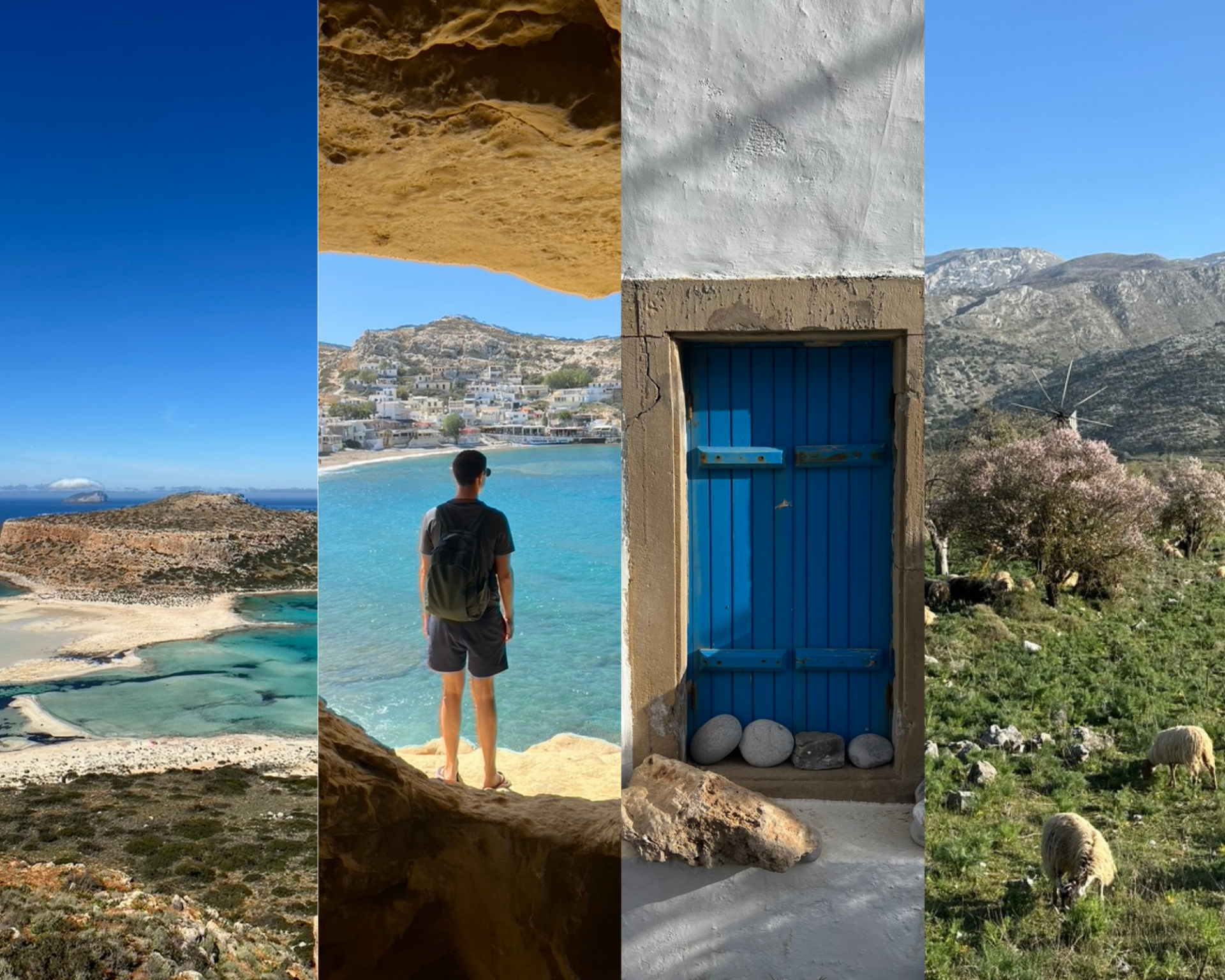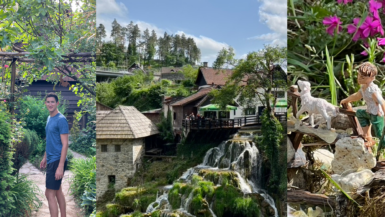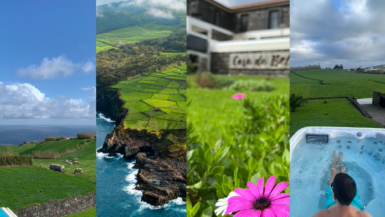Welcome to my complete travel guide to Crete, Greece! I spent an incredible month exploring this beautiful island, uncovering its rich history, stunning landscapes, and vibrant culture. From the ancient ruins of Knossos to the breathtaking beaches of Elafonissi, Crete offers an array of unforgettable experiences. In this guide, I’ll share the best things to see and do, where to stay, tips for getting around, and more, all based on my personal adventures. Join me as we dive into the wonders of Crete and discover why it’s such a fantastic destination to call home either for a short trip or longer!
Find a great hotel in Crete, Greece on Trip.com here!
Table of Contents
Complete Travel Guide to Crete, Greece
Why Visit Crete?
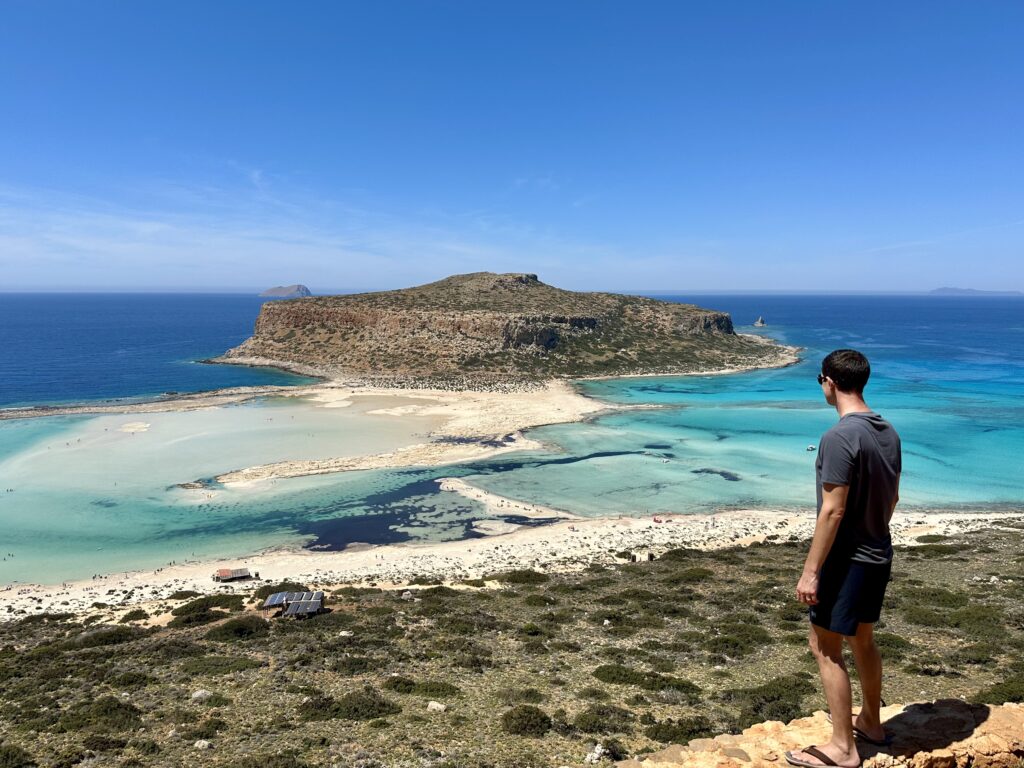
Why visit Crete? Unlike the bustling tourist hubs of Santorini and Mykonos, Crete remains a tranquil haven with plenty to offer. This largest Greek island boasts some of the most beautiful beaches in the country, where you can unwind and embrace the slower pace of life.
Crete is also more affordable compared to its more popular counterparts, making it a great destination for budget-conscious travelers. The island’s diverse landscapes range from stunning coastlines to rugged mountains, providing endless opportunities for adventure and exploration.
Rich in history and culture, Crete invites you to discover ancient ruins, charming villages, and vibrant local traditions. For a genuine, enriching Greek experience, Crete is the perfect choice. Let’s dive into this Crete Greece complete travel guide!
Best Things to See & Do in Crete, Greece
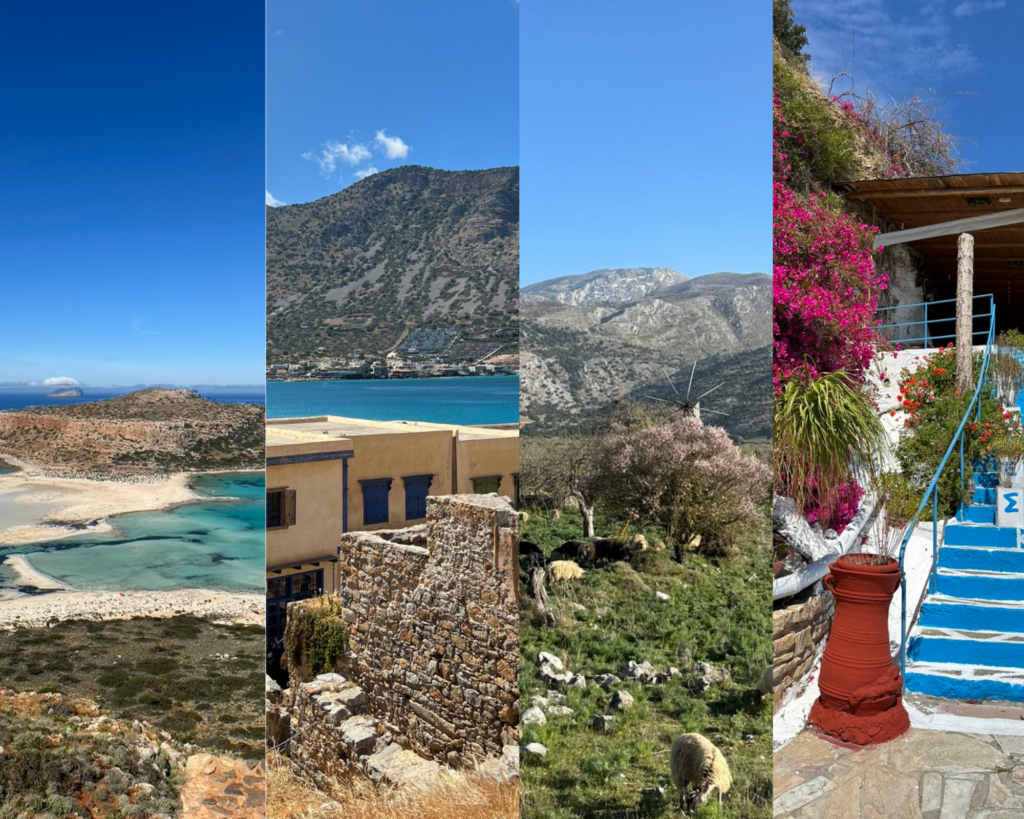
Crete is brimming with incredible sights and activities that cater to every type of traveler. From ancient ruins to breathtaking beaches, here are some of the must-see attractions on this enchanting island:
- Chania Old Town: Wander through the narrow, picturesque streets of this historic town, rich with Venetian and Ottoman architecture.
- Balos Lagoon & Beach: Marvel at the stunning turquoise waters and white sandy shores of this famous lagoon, perfect for a day of relaxation and snorkeling.
- Falasarna Beach: Enjoy one of Crete’s most beautiful beaches, known for its crystal-clear waters and golden sands.
- Lasithi Plateau: Explore this fertile plateau dotted with traditional windmills and charming villages, offering a glimpse into Crete’s rural life.
- Spinalonga Island: Visit this historic island, once a leper colony, and explore its well-preserved Venetian fortress.
- Knossos Palace: Discover the ancient ruins of the Minoan civilization at this famous archaeological site, believed to be the mythical labyrinth of King Minos.
- Matala Beach & Caves: Relax on the beautiful sandy beach and explore the ancient caves carved into the cliffs, once home to hippies in the 1960s.
- Agios Nikolaos: Stroll through this picturesque coastal town, known for its charming lake, vibrant nightlife, and stunning views over Mirabello Bay.
With so many incredible things to see and do, Crete promises an unforgettable experience for every visitor.
Learn more about the best things to do in Crete with my travel guide here!
Where to Stay on the Island of Crete
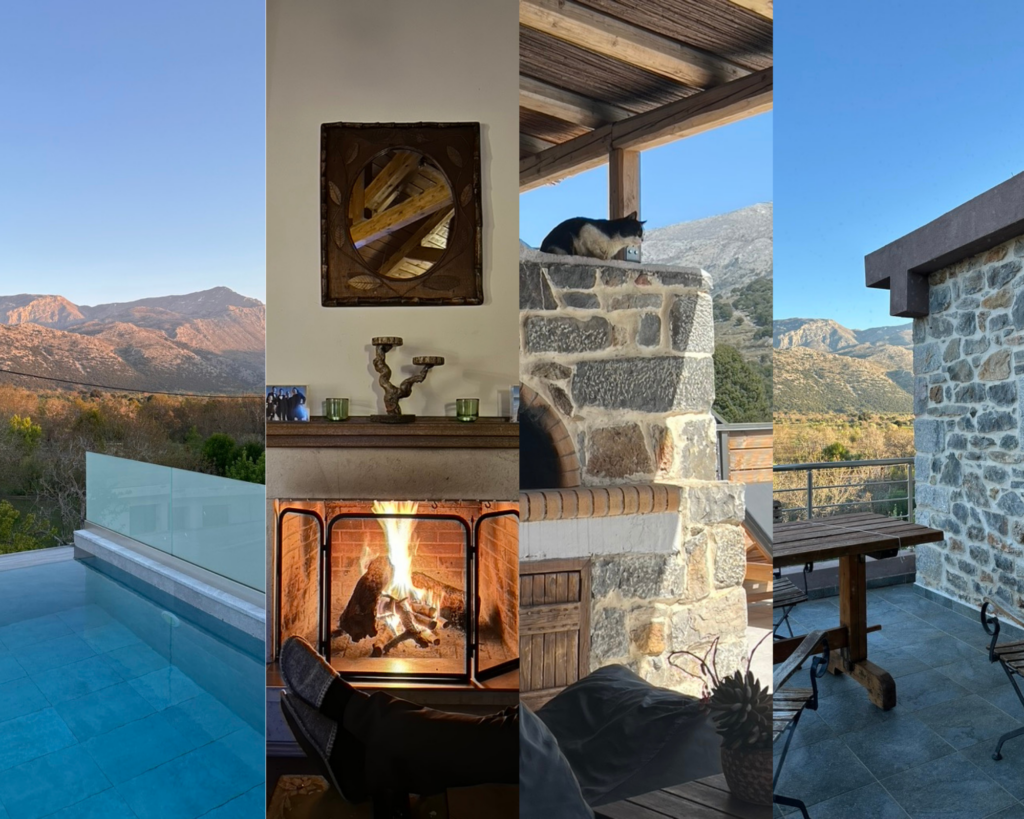
Choosing where to stay in Crete is more important than ever due to the island’s large size and the wide distribution of its attractions. With so much to see and do, basing yourself in the right location can make all the difference in your travel experience.
Whether you’re drawn to the historic charm of old towns, the tranquility of rural landscapes, or the pristine beauty of coastal areas, Crete offers a variety of regions, each with its unique appeal. Here are the top regions to consider for your stay:
- Chania Town: Ideal for history buffs and food lovers, this charming town offers beautiful Venetian architecture, bustling markets, and a vibrant dining scene. Hotel Options: Theta Seaside Boutique Hotel, Casa Delfino Hotel & Spa, & Samaria Hotel.
- West Coast: Perfect for beach enthusiasts, this area boasts stunning beaches like Balos and Falasarna, along with picturesque coastal villages. Hotel Options: Molos Bay Hotel, Elia Hotel & Spa, & Balos Beach Hotel.
- Lasithi Plateau: For a serene escape, stay in this rural region surrounded by traditional windmills and charming villages, offering a taste of authentic Cretan life. Hotel Options: Lasithi Luxury Villa & Zeus House.
- Heraklion Area: Central and convenient, this region is close to the famous Knossos Palace and offers a mix of cultural sites, shopping, and nightlife. Hotel Options: GDM Megaron Hotel & Capsis Astoria Heraklion.
- South Coast: Known for its untouched beauty, this area features pristine beaches, dramatic landscapes, and a more laid-back atmosphere, ideal for nature lovers and adventurers.
Learn more about where to stay on Crete with hotel options in this full blog post!
How to Get Around/Transport Options
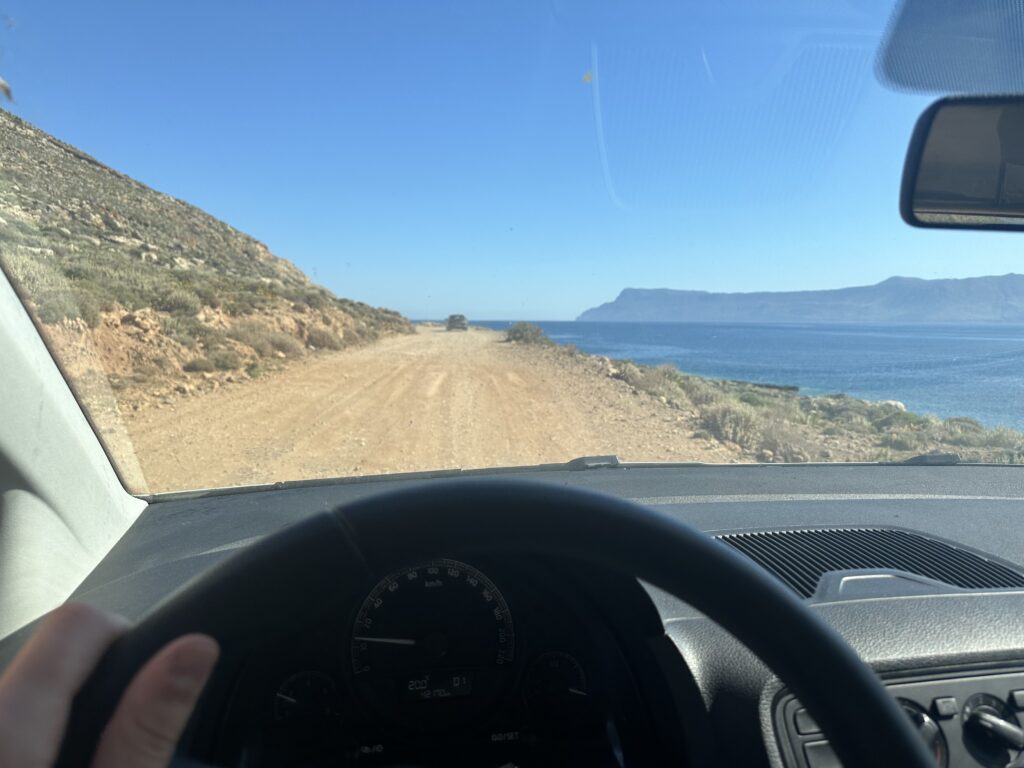
Getting around Crete is flexible and convenient, with multiple options to suit various budgets and preferences. Whether you prefer the freedom of driving, the ease of guided tours, or the scenic routes by ferry, there’s a transport option for everyone.
- Rent A Car: The most convenient and easiest way to get around is to rent a car. Rates are relatively affordable, and driving in Crete is fun and fairly easy. Be on the lookout for speed cameras and, when on the major highways, be sure to hug the shoulder to allow cars to pass. It’s a Crete thing.
- Group Tours: If you prefer to leave the driving to somebody else, you can join group tours. You can find large group tours at a cheaper rate or even private tours. There’s something to suit every budget and desire.
- Ferry: The ferry system in Greece is fantastic. If you are trying to get to some of the coastal towns around the island, there are some ferry systems in place. You can also use the ferry to get to other islands easily.
With these transport options, exploring Crete and its many attractions is convenient and enjoyable, allowing you to experience the best of what this beautiful island has to offer.
Tips for Visiting Crete, Greece
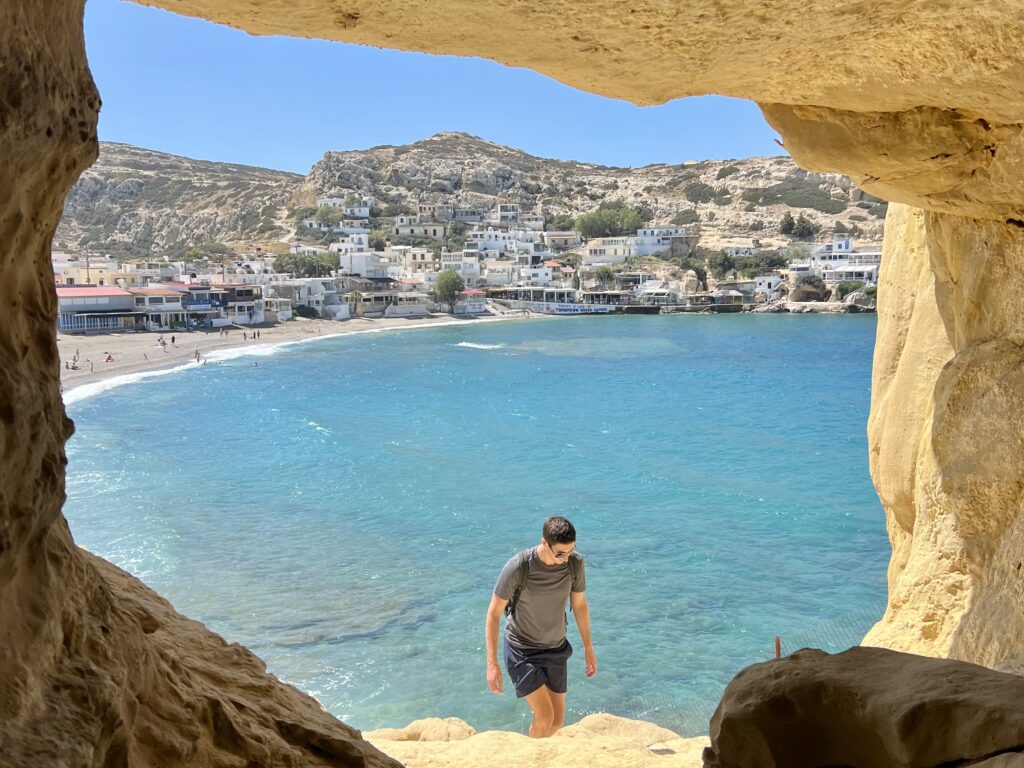
Here are some practical tips to help make your trip to Crete smooth and seamless:
- Get Connected with Airalo e-SIMS: Stay connected by using Airalo e-SIMS. This convenient option provides reliable internet access throughout your stay, making it easy to navigate and stay in touch.
- Wear Plenty of Sunscreen and Sun Protection: The Cretan sun can be intense, so make sure to wear plenty of sunscreen and bring sun protection like hats and sunglasses to avoid sunburn and heat exhaustion.
- Length of Visit (At Least 5 Days): Plan to stay for at least 5 days to fully experience what Crete has to offer. This allows ample time to explore key attractions, relax on beautiful beaches, and immerse yourself in the local culture.
- Rent a Car for Flexibility: To explore the island at your own pace and reach less accessible areas, renting a car is highly recommended. This gives you the freedom to discover hidden gems and remote locations. Prices for rental cars in Crete are very reasonable.
- Stay Hydrated: The warm climate can lead to dehydration, so always carry a bottle of water with you. Tap water is generally safe to drink, but bottled water is widely available if preferred.
- Learn Basic Greek Phrases: While many locals speak English, learning a few basic Greek phrases can go a long way in enhancing your interactions and showing respect for the local culture.
- Try Local Cuisine: Don’t miss out on trying the delicious local cuisine. From fresh seafood to traditional Cretan dishes like dakos and kalitsounia, the island’s food scene is a highlight of any visit.
By following these tips, you’ll ensure a more enjoyable and stress-free trip to Crete. These tips will allow you to fully appreciate the beauty and charm of this incredible island.
Best Time of Year to Visit
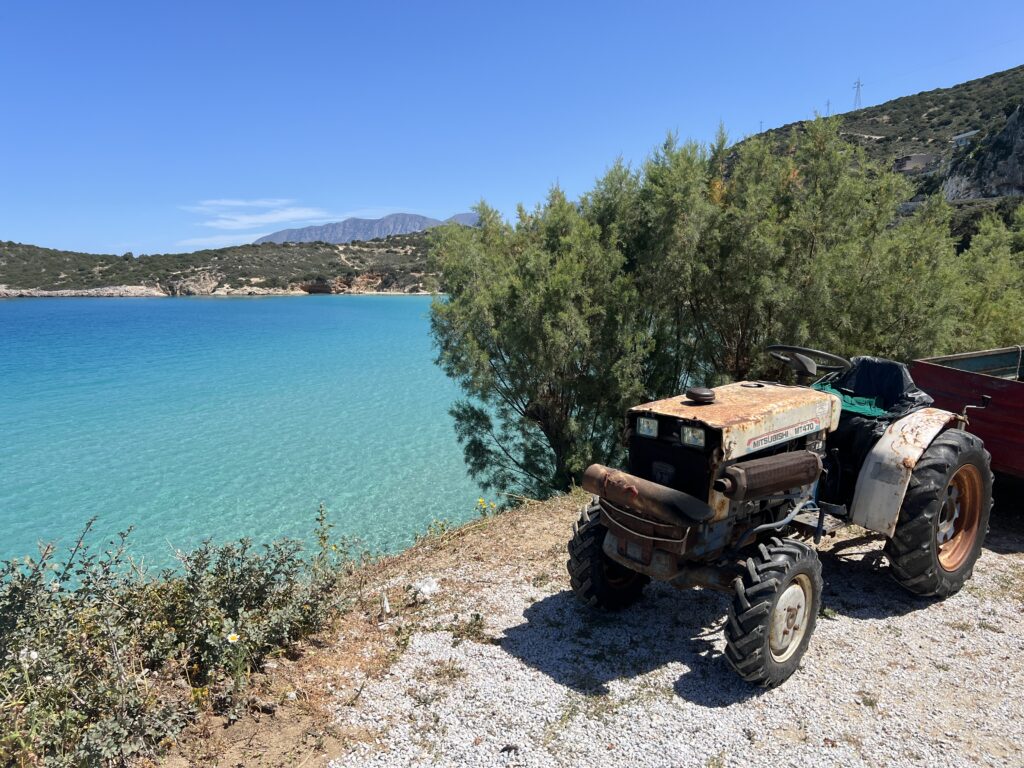
Choosing the right time to visit Crete, Greece, can make or break your trip. The island offers different experiences depending on the season. Here’s a quick guide to help you decide the best time for your visit:
- Spring (April to June):
- Advantages: Pleasant weather, fewer crowds, and blooming landscapes. Ideal for outdoor activities and sightseeing.
- Disadvantages: Sea temperatures might still be a bit cool for swimming.
- Summer (July to August):
- Advantages: Hot weather perfect for beach activities, lively atmosphere, and numerous festivals.
- Disadvantages: High tourist season means crowded attractions and higher prices. Intense heat can be overwhelming.
- Autumn (September to October):
- Advantages: Warm weather, fewer crowds, and lower prices. Sea temperatures are still perfect for swimming.
- Disadvantages: Shorter days and some tourist facilities may start closing towards the end of the season.
- Winter (November to March):
- Advantages: Mild weather, especially compared to northern Europe. Great for hiking and exploring historical sites without the crowds.
- Disadvantages: Many tourist facilities and some attractions may be closed. Cooler temperatures limit beach activities.
By considering the advantages and disadvantages of each season, you can plan your trip to Crete, Greece to ensure the best possible experience based on your preferences.
Conclusion
I absolutely loved my time on the island of Crete, Greece. Its incredible diversity, from stunning beaches to breathtaking mountains and gorgeous historical towns, makes it a perfect destination for any traveler. Whether you’re soaking up the sun on its pristine shores, exploring ancient ruins, or savoring delicious local cuisine, Crete truly has it all.
Best of all, you can enjoy these experiences without the overwhelming crowds found on other popular Greek islands. Crete’s charm, beauty, and tranquility make it a must-visit destination, and I hope this guide helps you plan an unforgettable trip to this remarkable island.
Pin this Post for Later!
